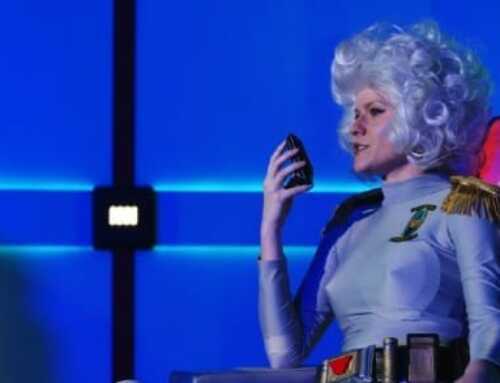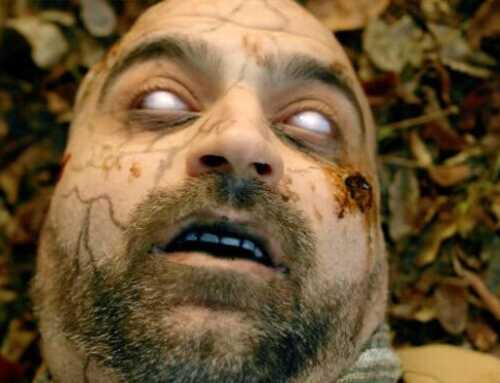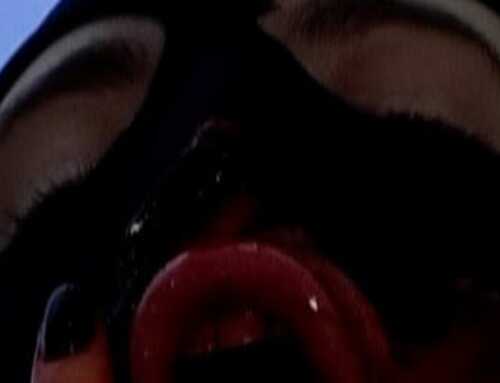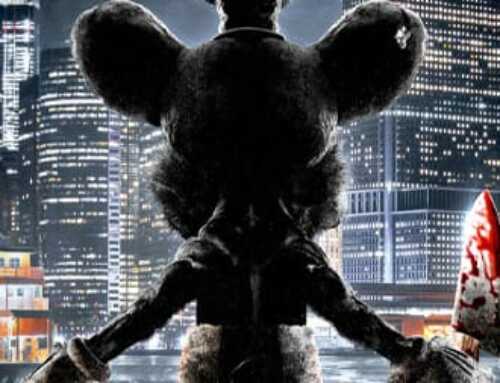One great expectation placed on women by society is the assumption that every one of them desires to become a mother. Parents ask their newly wedded daughters when the first grandchild will come. Women getting older are pressured to do something while they still can. But what happens when a woman’s inner nature wars with her hope to fulfill that expectation? Michelle Garza Cervera’s debut feature Huesera: The Bone Woman offers a terrifying and truly uncomfortable response to that question.
The film focuses on the character Valeria Hernandez (portrayed with haunting, painful excellence by Natalia Solián), a young wife who appears at first to want a child. She actively takes part in a prayer at a shrine for Our Lady of Guadalupe. She and her husband Raúl (a reserved performance by Alfonso Dosal) diligently work at the task of creating a child. Soon enough, the pregnancy happens to the delight of most of her family.
But very quickly, the reality of being pregnant sets in for Valeria and becomes a quickly escalating nightmare. Her workshop is eradicated for the baby’s room. She loses weight because she can’t keep food down. She cracks her fingers compulsively. Even her husband stops wanting to sleep with her because he’s uncomfortable about the baby. That’s when Valeria spots a woman across the street who appears to leap to her death, only to then snap her head up from the street to stare at the horrified mother-to-be.
Huesera: The Bone Woman works on several levels. It can easily be read as a response to the fears and worries of a first-time mother, as a visual nightmare reflection of the stress of bringing a new child into the world. On a different level, the film creates a discussion on the idea of women’s desire to be mothers. Valeria repeatedly has flashbacks within the film that show her as she once was, a woman who absolutely refuted the very traditional, stoic family that she now has actively helped set into being.
The film also excels as an actual horror film. It lives in the realm of body horror, with truly uncomfortable creatures bending in unnatural ways and with a main character who becomes less and less connected to her own body as the child within grows. The way the film is shot and edited echoes this disconnect, separating the audience from Valeria through unusual angles and shots that conceal what we are trying to see through darkness and obstructions. The sound design of cracking bones became almost too much for me to handle as I watched the film due to its jarring repetition.
Another layer of horror film connection lies in its echoes of other mother-to-be films like Rosemary’s Baby. There are hints within the narrative that this baby may not be a natural creation, or that someone other than Valeria intends to become the parent of the child. Even the very first scene echoes this idea. The prayers to Guadalupe sound anything and the sudden cut to a figure mirroring the saint but on fire suggest a much darker, perhaps satanic, act is underway.
The true joy of Huesera: The Bone Woman lies in its deft construction. Cervera first tells us a simple, elegant tale about a mother. At the same time, however, she weaves multiple layers throughout to create a complex, building fear in the audience that exactly echoes the fear happening to the main character. Every element of the film feels deliberate, intended and cohesive and the final outcome is deeply troubling—and exactly as the director and the brilliant main actor intended.
8 out of 10
| Huesera: The Bone Woman | ||
| RATING: | NR |
HUESERA: THE BONE WOMAN – Official Trailer (2023) |
| Runtime: | 1 Hr. 33 Min | |
| Directed By: | ||
| Written By: | Michelle Garza Cervera | |
2 Comments
Comments are closed.








[…] Erik B Source link […]
[…] Making her feature film debut, Michelle Garza Cervera directed and co-wrote the bone-cracking Mexican horror film Huesera: The Bone Woman. […]